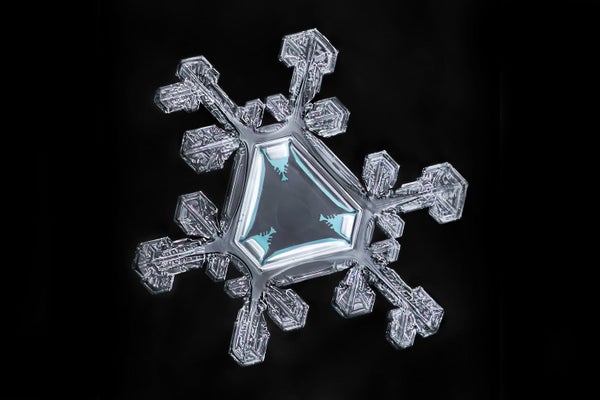Years ago Don Komarechka was at his mundane advertising agency job when it started snowing outside. He happened to have brought a new camera lens that takes sharp, close-up photographs to work, so he took his gear outside. Not long after, Komarechka was venturing into his backyard every winter to take images of snowflakes and made nature photography his full-time job.
The flakes Komarechka captures can fall anywhere in the world, though factors such as temperature, humidity and wind speed change which designs dominate a snowfall. (The exception is artificial ski resort snow, he says. “It’s not beautiful at all,” he adds. “It’s just blobs of ice.”) A natural snowflake starts when water freezes into a crystal around a speck of dust. The form builds elaborate spokes as it tumbles through the clouds, collecting water vapor. Different micro environments in the air dictate the final shape in a way physicists are still trying to understand. Komarechka’s photographs have given researchers a look at formations they cannot seem to generate in their own high-tech snowflake-production labs.
Despite the value of his work, Komarechka is happy to walk anyone through his process and to marvel at what strange shapes other photographers document. “If I can find this in my backyard,” he says, “anybody can find this in their backyard.”
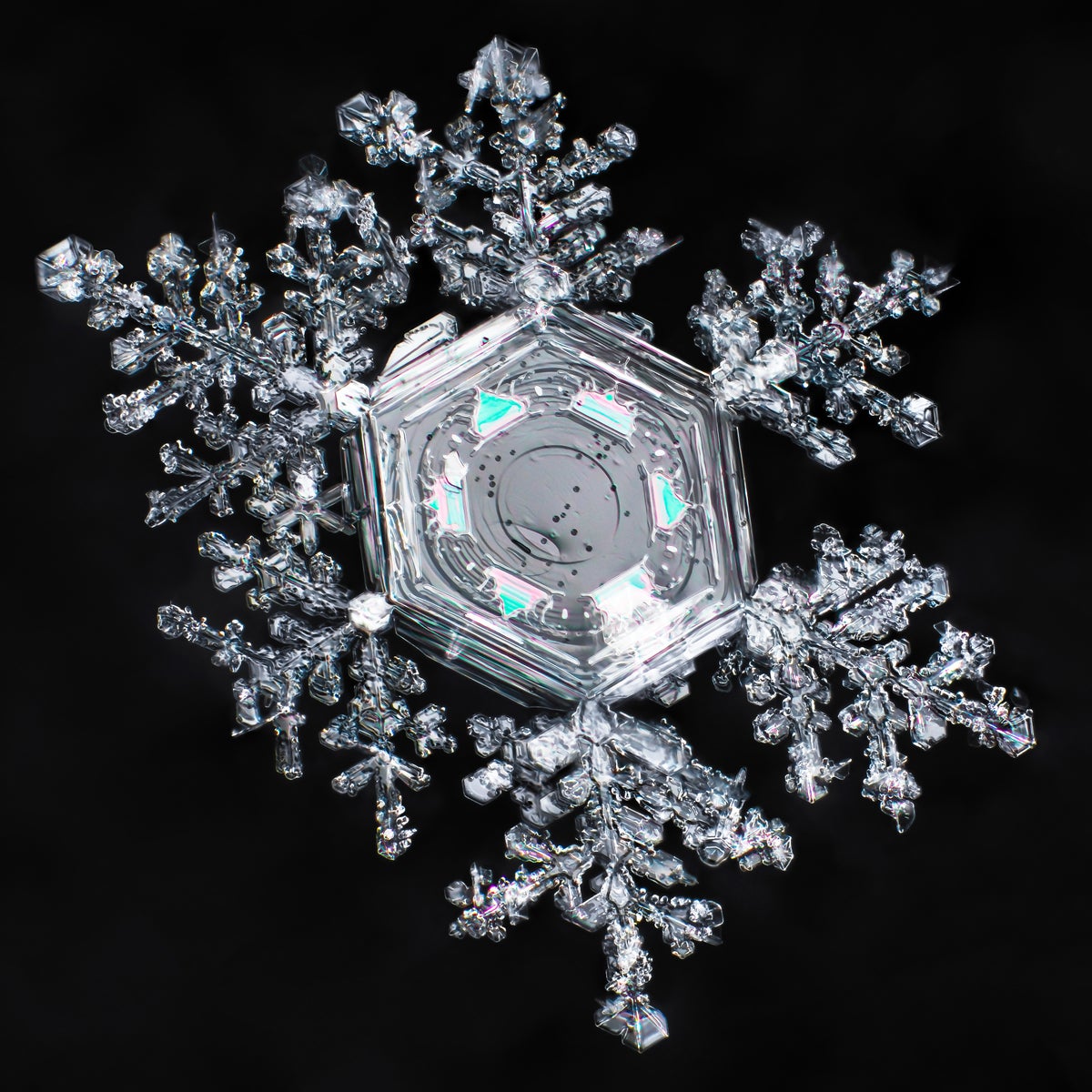
Credit: Don Komarechka
Plate-type crystal that developed dendrites, or treelike branches. As the center plate grew, ice at the edge got too thick, forcing the material to move inward, lose its 60-degree angles and form the near-perfect circle in the middle.
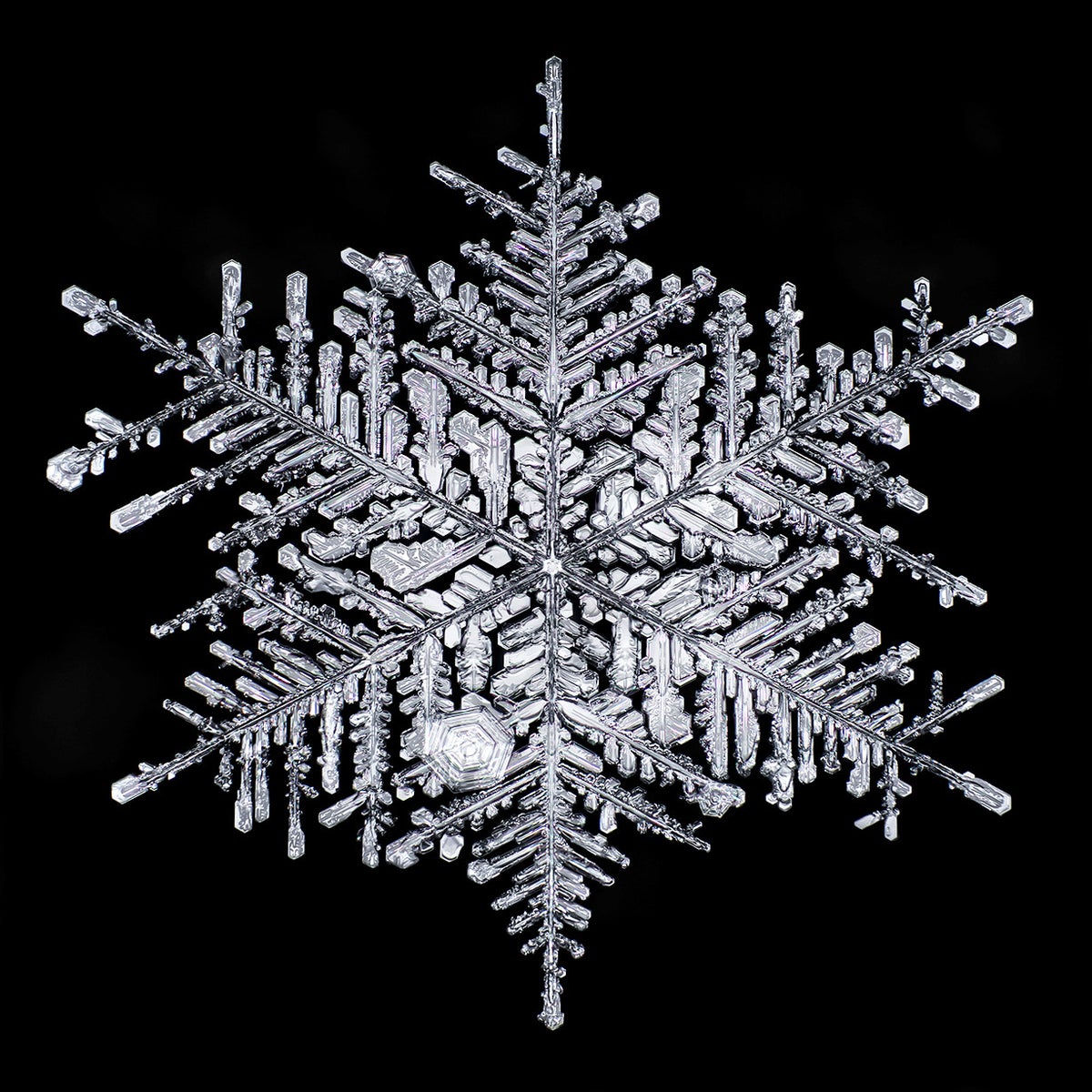
Credit: Don Komarechka
Stellar, or star-shaped, flake with six-arms is about eight to nine millimeters across. The weblike clump on the lower left is a smaller snowflake stuck to the surface. It is about the same size as the previous snowflake.
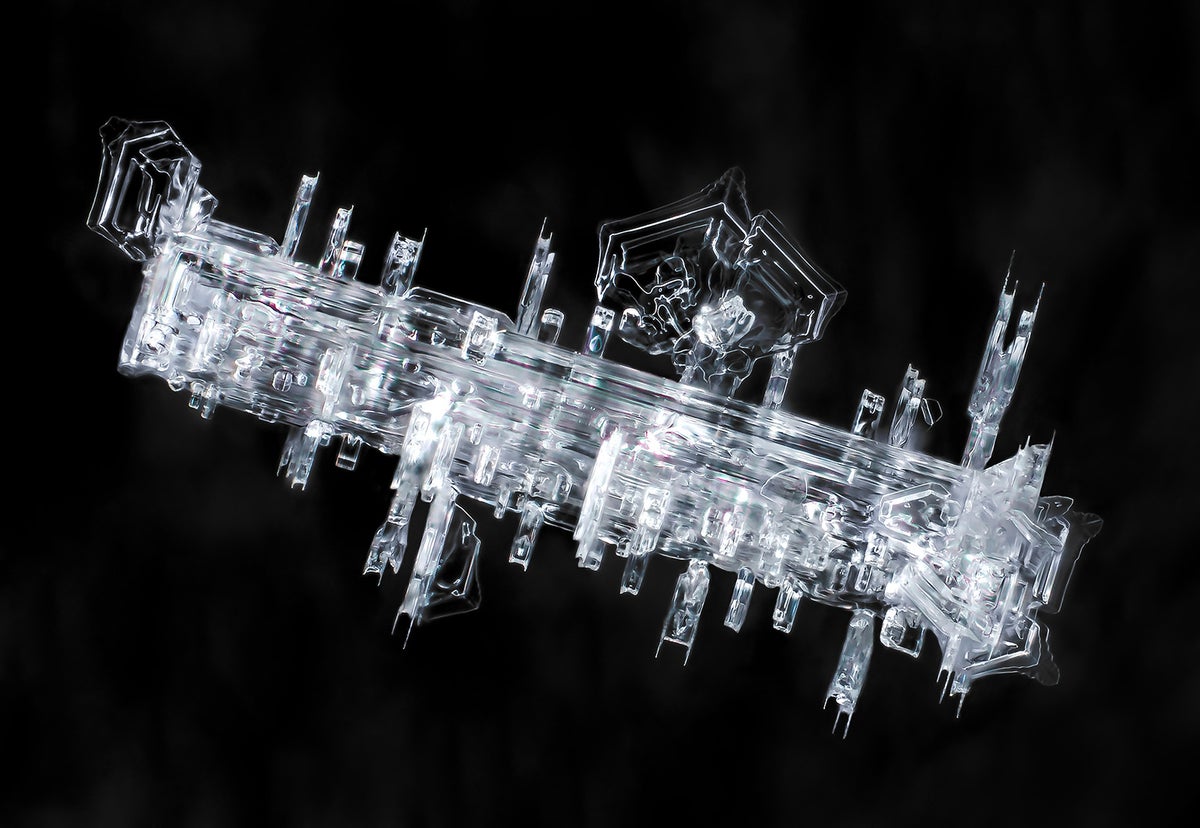
Credit: Don Komarechka
Column snowflake. The shape formed when a long and skinny flake was hit with frozen water droplets called rime. In this case, each bit of rime sparked a new crystal to form.
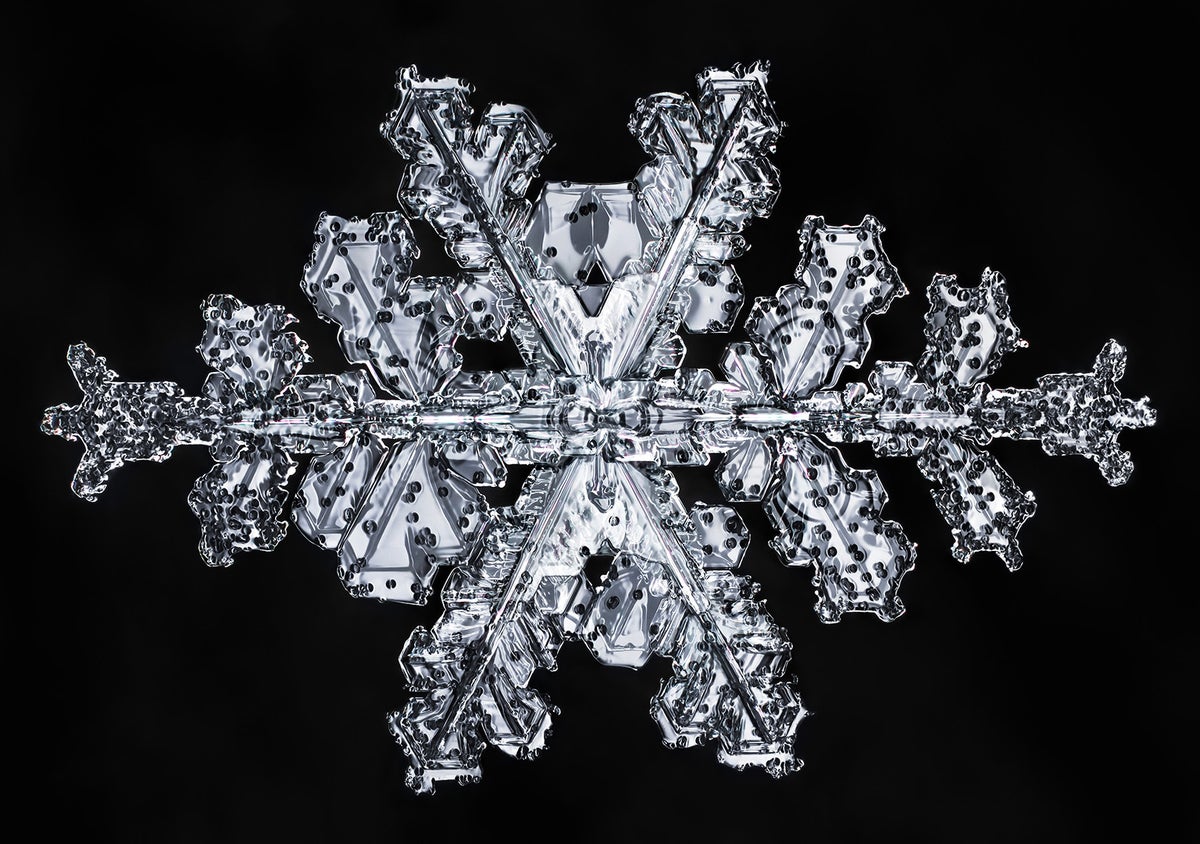
Credit: Don Komarechka
Column crystal is capped with plates. The angle of the photograph makes this shape look flat, but the X in the center is one plate while the horizontal bar of extensions is another. Separating the two is a column crystal, which grew these constellations at either end.
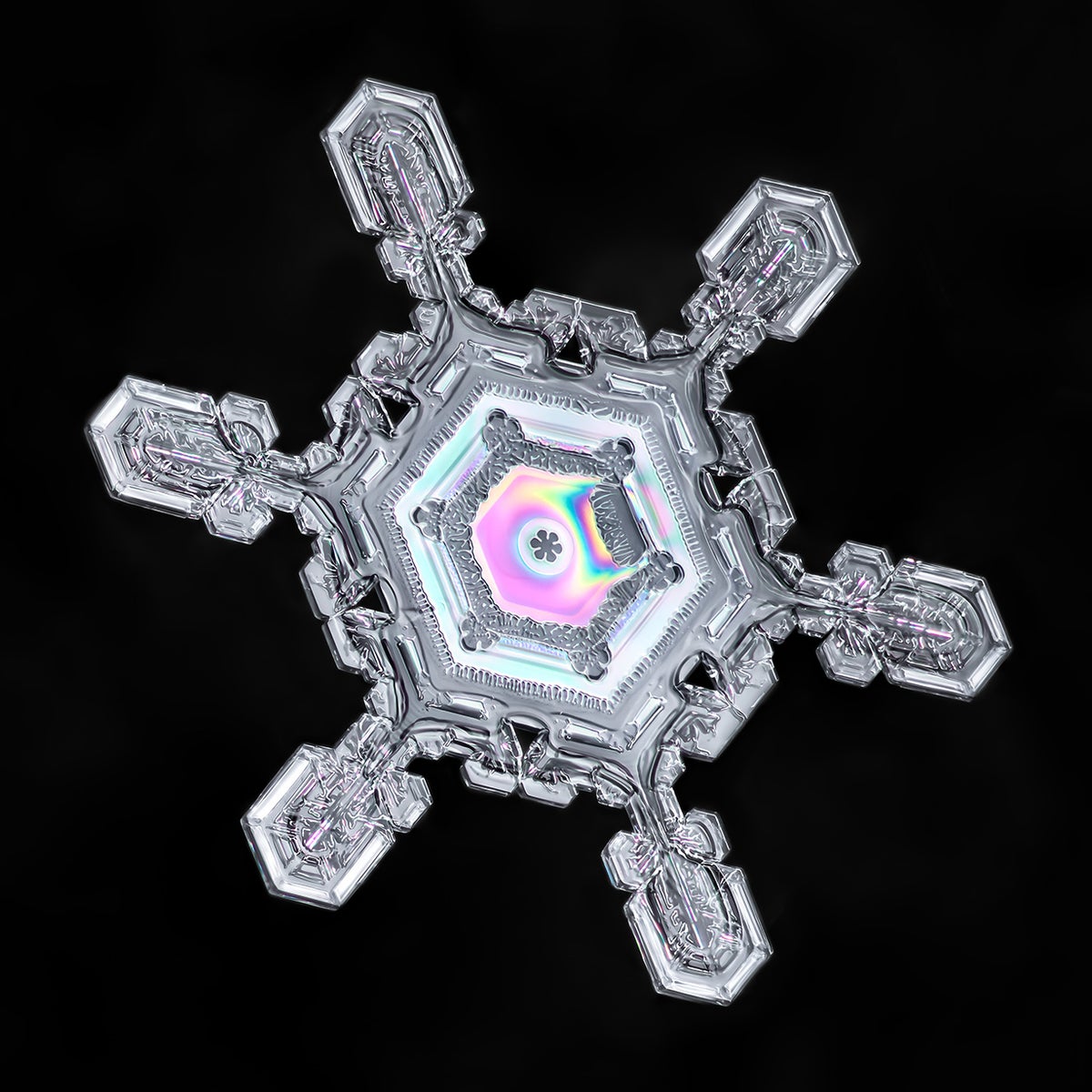
Credit: Don Komarechka
Plate snowflake that started to grow branches, fused its arms and then branched out again, showing how drastically the tiny structures can change over time. The six small triangles of empty space around the perimeter show where the fusion happened.
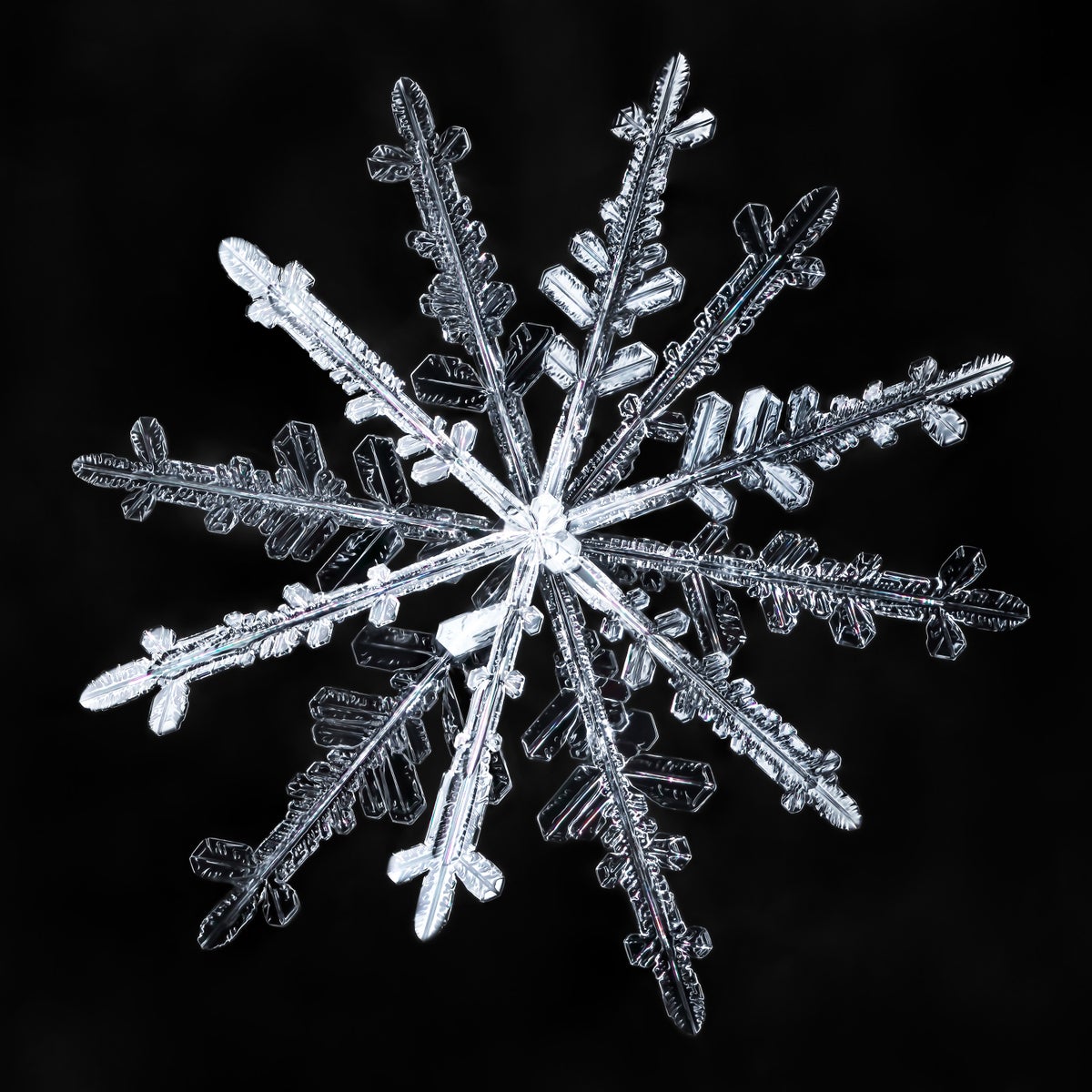
Credit: Don Komarechka
Twelve-branched snowflake is actually two six-armed versions stuck together. By chance, the flakes collided at an almost 30-degree rotation early on in their development. As the arms grew and branched, the shapes navigated around each other.
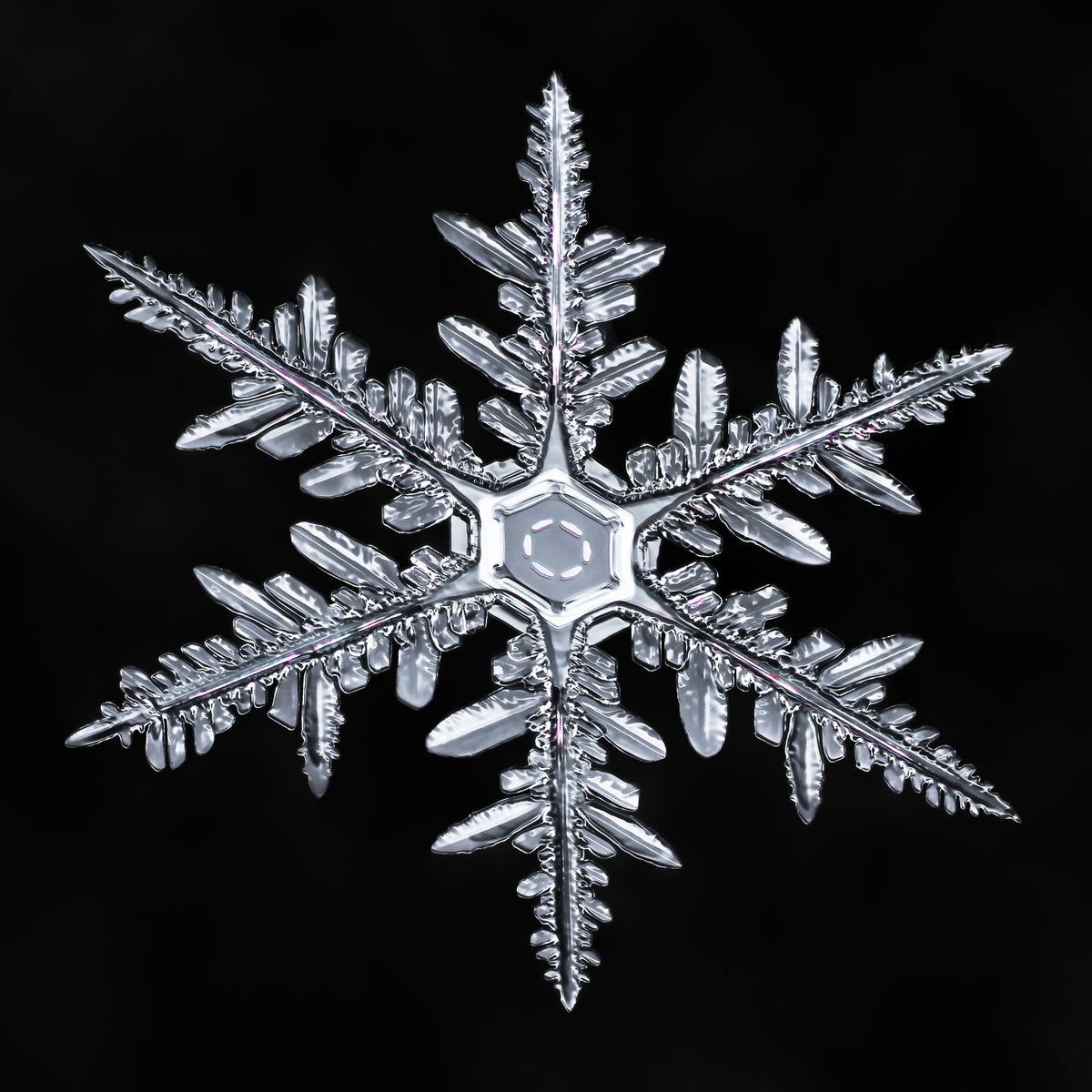
Credit: Don Komarechka
Plate snowflake that turned into a stellar dendrite. Each branch on the six arms looks almost like a feather because the flake has started to sublimate, or fade from a solid to gas, and has lost some hard angles.
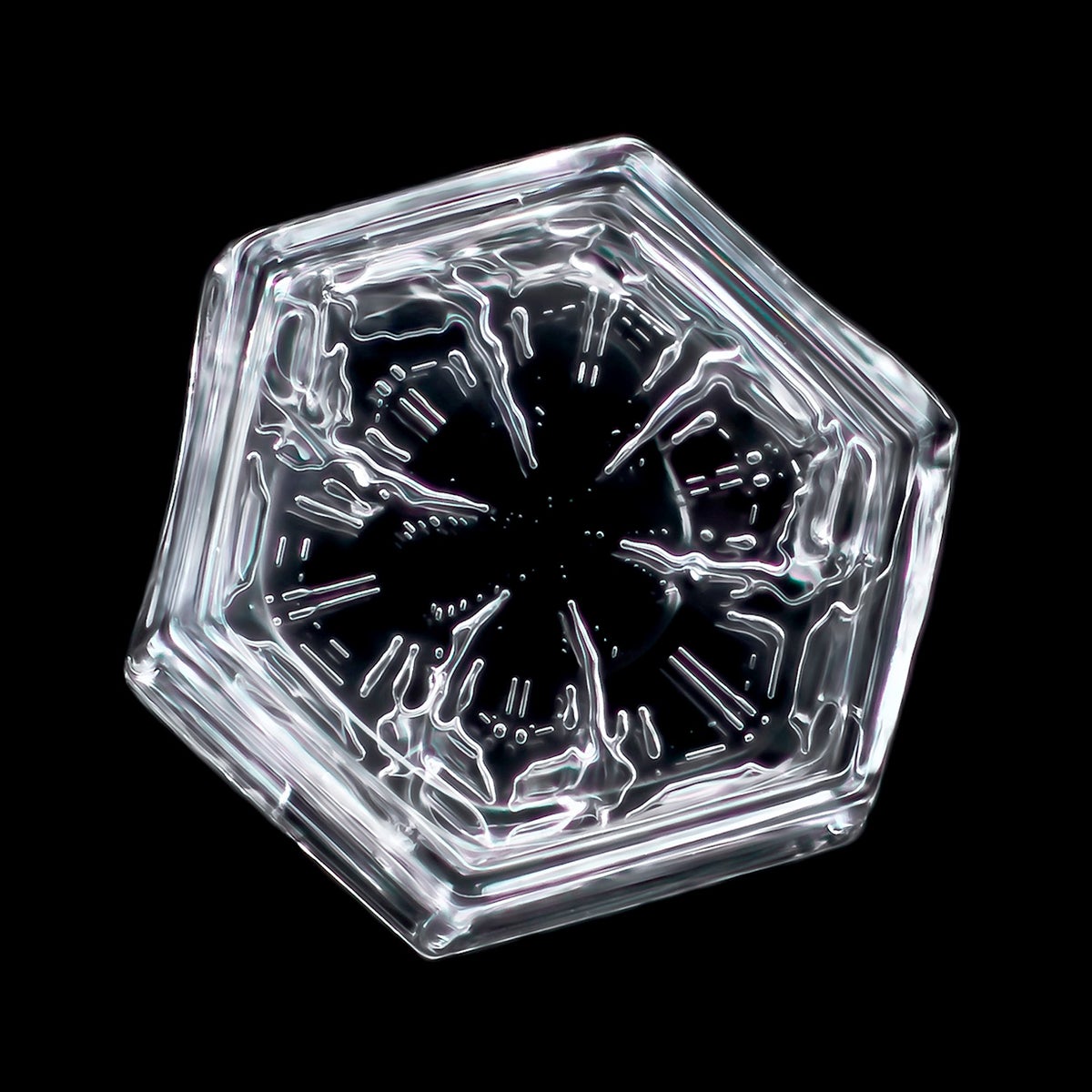
Credit: Don Komarechka
Small hexagonal plate snowflake. The icicle and exclamation point shapes pointing toward the center are bubbles—a good reminder that snowflakes are 3-D structures with (sometimes difficult to perceive) depth.
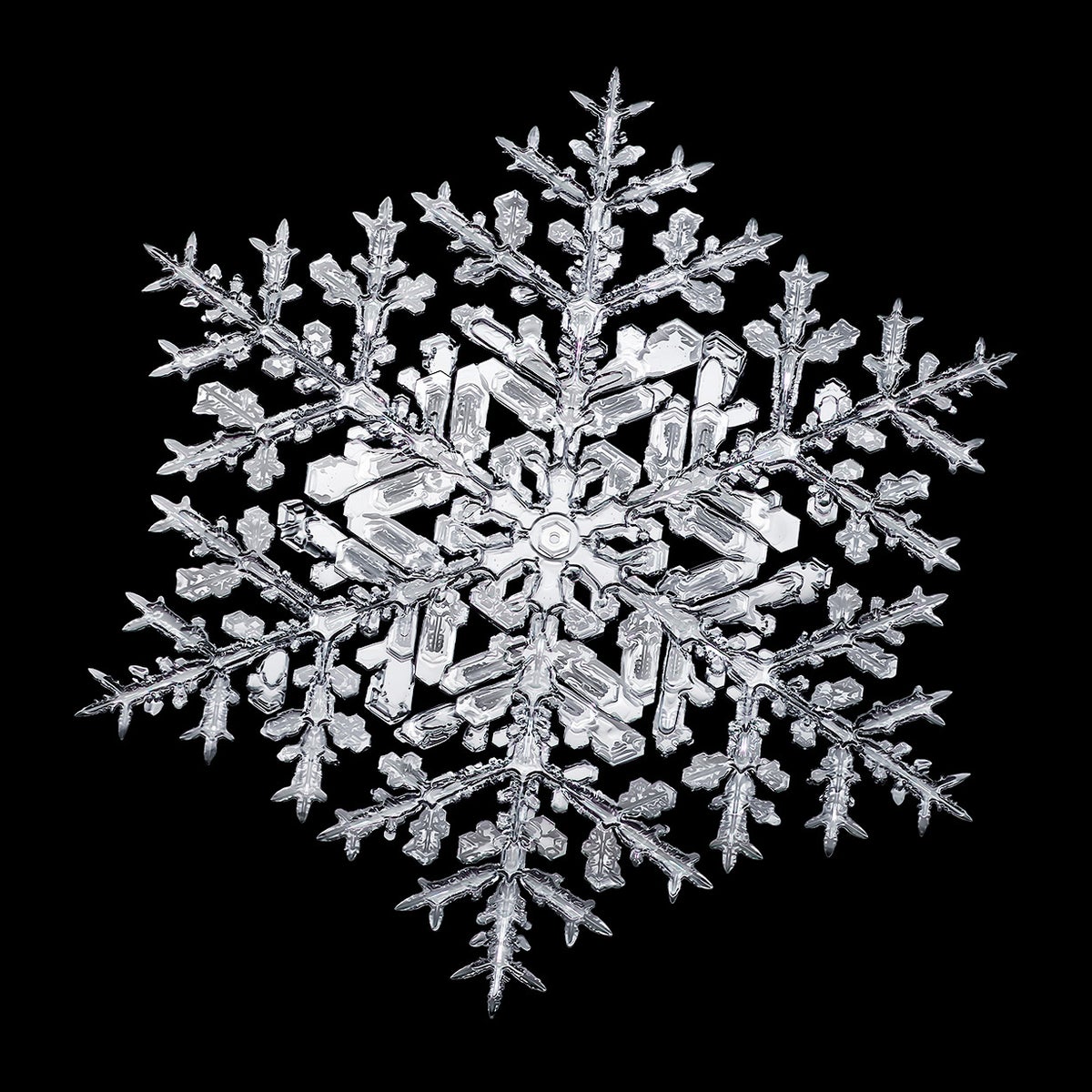
Credit: Don Komarechka
Stellar dendrite snowflake. The final form is so balanced, it almost appears symmetrical. When flakes like this one are about a centimeter across, humidity and temperature can be different enough at either end to disrupt harmonious growth.
